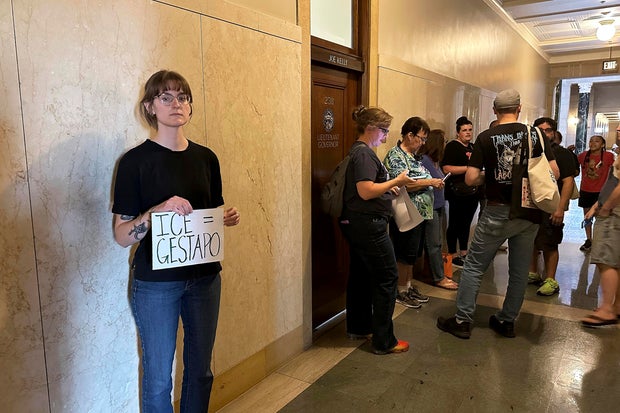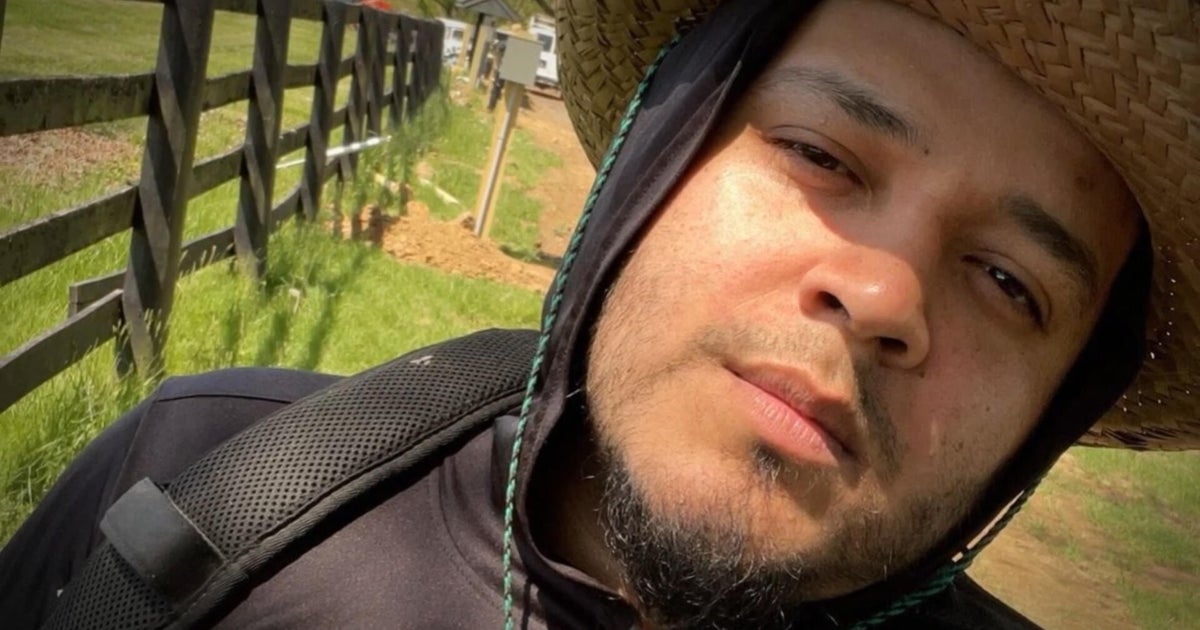
Nebraska Republican Gov. Jim Pillen announced plans Tuesday for an immigration detention center in a farming area in the state's southwest corner as President Trump's administration races to expand the infrastructure necessary for increasing deportations.
Pillen said he and Department of Homeland Security Secretary Kristi Noem had agreed to use an existing minimum security prison work camp in rural McCook to house people awaiting deportation and being held for other immigration proceedings.
The new facility was dubbed the "Cornhusker Clink" last week by Rob Jeffreys, director of the Nebraska Department of Correctional Services. It can accommodate 200 people with plans to expand to 300. McCook is about 210 miles west of Lincoln, the state capital.
"This is about keeping Nebraskans – and Americans across our country – safe," Pillen said in a statement.
Pillen announced he would order the Nebraska National Guard to provide administrative and logistical support to Nebraska-based immigration agents. About 20 Guard soldiers will be involved.
He also said the Nebraska State Patrol would sign an agreement that enables troopers to help federal immigration agents make arrests.
DHS said in a news release that the agreement with the state to expand Immigration and Customs Enforcement detention space was made possible by Mr. Trump's "big, beautiful bill" passed by Congress last month. The funding bill included $45 billion for ICE to expand its detention system, and nearly $30 billion for ICE agents and resources.
Jeffreys said the 186 people currently at McCook will be transferred to other state corrections facilities so the camp can be repurposed.
The facility will be run by the state of Nebraska but will be paid for by the federal government. All the people expected to be held there will be low to medium-risk detainees, Jeffreys said.
Jeffreys estimated it will take 45 to 60 days to relocate all the current McCook population while a prison in Lincoln is undergoing repairs from recent storm damage. It wasn't immediately clear how quickly ICE might start sending detainees to McCook.
But Jeffreys said it's already set up to house people, so detainees won't be housed in tents or other temporary quarters. "That facility has already been accredited. It's ready in the event that we are to move our folks out and move detainees in," he said.
"Thanks to Governor Pillen for his partnership to help remove the worst of the worst out of our country," Noem said in a statement Tuesday. "If you are in America illegally, you could find yourself in Nebraska's Cornhusker Clink. Avoid arrest and self deport now using the CBP Home App."
The Nebraska plan has already raised concerns.
In a video posted to social media, state Sen. Megan Hunt, an independent, blasted a lack of transparency about plans for a detention center, citing her unfulfilled request to the governor and executive branch for emails and other records about the plan.
She urged people to support local immigrant rights groups, and said any response by the Legislature would not come until next year — and only with enough support from lawmakers.
"The No. 1 thing we need to do is protect our neighbors, protect the people in our communities who are being targeted by these horrible people, these horrible organizations that are making choices to lock up, detain, disappear our neighbors and families and friends," Hunt said.
Six protesters sat in the hallway outside the governor's office Tuesday afternoon making signs that said, "No Nazi Nebraska" and "ICE = Gestapo."
Maghie Miller-Jenkins of Lincoln said she doesn't think an ICE detention center is a good idea, adding the state should tackle problems like child hunger and homelessness. "This state has numerous things they could focus on that would benefit the constituents," Miller-Jenkins said.
The Trump administration is adding new detention facilities across the country to hold the growing number of immigrants it has arrested and accused of being in the country illegally. Older and newer U.S. Immigration and Customs Enforcement centers were holding more than 56,000 immigrants in June, the most since 2019.
Other new and planned immigration detention facilities in the U.S. include the remote detention center in the Florida Everglades known as "Alligator Alcatraz," which opened last month. It's designed to hold up to 3,000 detainees in temporary tent structures. When Mr. Trump toured it, he suggested it could be a model for future lockups nationwide.
When federal officials announced the opening of the Florida detention center, they said its focus would be on rounding up individuals with a criminal record — people that Mr. Trump and border czar Tom Homan have called "the worst of the worst." However, many people who have been locked up there do not have criminal records, CBS News previously reported.
The Florida facility has also been the subject of legal challenges by attorneys who allege violations of due process there, including the rights of detainees to meet with their attorneys, limited access to immigration courts and poor living conditions. Critics have been trying to stop further construction and operations until it comes into compliance with federal environmental laws.
Florida Gov. Ron DeSantis announced last week that his administration is preparing to open a second facility, dubbed "Deportation Depot," at a state prison in north Florida. It's expected to have 1,300 immigration beds, though that capacity could be expanded to 2,000, state officials said.
Also last week, officials in the rural Tennessee town of Mason voted to approve agreements to turn a former prison into an immigration detention facility operated by a private company, despite loud objections from residents and activists during a contentious public meeting.
And the Trump administration announced plans earlier this month for a 1,000-bed detention center in Indiana that would be dubbed "Speedway Slammer," prompting a backlash in the Midwestern state that hosts the Indianapolis 500 auto race.







-3.png)



